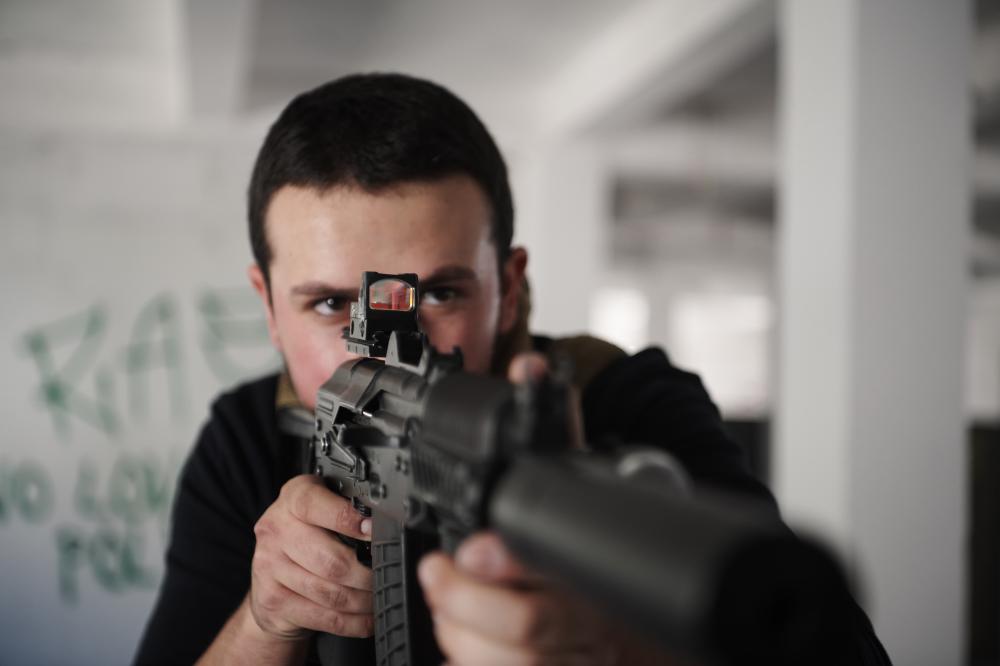
Introduction to Active Shooter Training
In an era where safety concerns within public spaces continually evolve, it’s paramount for individuals and organizations to stay prepared for any potential threat. At Security Strategies, a cornerstone of our mission is empowering our clients through education and practical training. One of the critical elements of our service portfolio is active shooter training. This program is meticulously designed to equip individuals and organizations with the knowledge and skills to effectively respond to an active shooter situation, thereby enhancing survival outcomes and minimizing the risk of injuries.
Understanding Active Shooter Situations
Defining an Active Shooter
An active shooter is an individual actively engaged in killing or attempting to kill people in a populated area. These situations are unpredictable and unfold rapidly, leaving little time for responders to arrive before the situation escalates. Recognizing the signs of potential threats and understanding the dynamics of these situations are crucial first steps in active shooter preparedness.
The Importance of Preparedness
Preparation is not merely about reaction; it’s about prevention and mitigation. At Security Strategies, we emphasize the significance of a proactive mindset–identifying potential warning signs, understanding the psychology of an active shooter, and fostering a culture of awareness and reporting can dramatically reduce the likelihood and impact of such incidents.
Components of Active Shooter Training
Recognizing Potential Threats
Our training programs begin by educating participants on the behavioral indicators of potentially violent individuals. It’s about creating an environment where concerns are communicated and addressed before they escalate into crises.
Immediate Response Strategies
When faced with an active shooter situation, the decisions made in the first few seconds are often the most critical. Our courses delve into the “Run, Hide, Fight” principle, providing attendees with strategies to evacuate safely, take shelter effectively, and as a last resort, defend themselves if necessary.
Communication and Cooperation with Law Enforcement
Understanding how to interact with arriving responders can significantly affect the outcome. Our training includes modules on effective communication with law enforcement, ensuring that actions taken by individuals in the midst of a crisis support, rather than hinder, response efforts.
Real-World Applications of Active Shooter Training
Workplaces
The reality of today’s world is that businesses must be prepared for the possibility of an active shooter event. Our programs offer specialized scenarios relevant to corporate environments, focusing on policies, procedures, and drills that can be integrated into standard safety protocols.
Educational Institutions
Schools and universities present unique challenges in active shooter scenarios. Our training for educational settings emphasizes age-appropriate strategies, communication systems, and reunification processes post-incident, ensuring a comprehensive approach to safety and preparedness.
Places of Worship
Security Strategies respects the need for sanctuaries to remain open and welcoming while also being prepared for potential threats. Our training for religious organizations is designed with sensitivity to their unique context, providing congregations with practical measures to enhance safety without compromising their mission.
Overcoming Challenges in Active Shooter Preparation
One of the most significant hurdles in active shooter preparedness is the psychological barrier to acknowledging the threat. Through our training, we aim to demystify the topic, encouraging a healthy dialogue about fears and concerns. This approach helps to break down resistance, fostering a culture of vigilance and preparedness.
Another challenge lies in the diversity of environments in which active shooter events can occur. Our curriculum is adaptable, designed to be relevant to various settings–be it a corporate office, a school, a shopping mall, or a place of worship. Tailoring our training to the specific needs and circumstances of each group ensures that the strategies taught are both practical and effective.
Incorporating Personal Insights
Throughout my years of experience in security consulting, I’ve encountered countless stories of resilience, bravery, and innovation when facing threats. These narratives are not only inspiring but also highly educational. They remind us of the unpredictability of human behavior and the remarkable capacity of individuals to adapt and overcome in crisis situations. Sharing these stories during our training sessions adds a layer of depth and relatability that facts and protocols alone cannot achieve.
The journey of learning to navigate the complexities of active shooter situations is ongoing. Each incident reported in the media, each emergency drill conducted, and each training session completed contributes to a broader understanding and better preparedness. At Security Strategies, we are committed to evolving our programs to reflect the latest research, tactics, and feedback from our participants, ensuring that we remain at the forefront of safety and security training.
Conclusion
Active shooter training is not just about learning to respond to a threat; it’s about building a mindset of preparedness, resilience, and responsibility towards oneself and others. The strategies and principles taught in our courses at Security Strategies extend beyond the immediate context, enriching participants with skills that enhance their overall sense of security in all aspects of life.
We invite individuals and organizations alike to join us in this important endeavor. Together, we can create safer environments, empowered communities, and a culture of readiness that can withstand the challenges of our times.

Does OSHA require active shooter training?
While OSHA doesn’t explicitly mandate active shooter training, they do require employers to provide a workplace free from recognized hazards that are causing or are likely to cause death or serious physical harm under the General Duty Clause, Section 5(a)(1) of the Occupational Safety and Health Act. Given the unfortunate rise in active shooter incidents, it’s becoming increasingly recognized that preparing employees for the possibility of an active shooter falls under the responsibility of creating a safe work environment. Security Strategies highly recommends incorporating active shooter training as part of a comprehensive approach to workplace safety.
Who should be involved in active shooter training exercises?
Active shooter training should be inclusive, covering all members of an organization, from the CEO to entry-level employees. In schools, this extends to teachers, staff, and depending on the age-appropriateness, students. For places of worship and other community spaces, we encourage training for all leaders and regular attendees. The reasoning is simple: during an active shooter event, the more individuals familiar with how to react, the better the chances of minimizing harm and facilitating a coordinated response that supports law enforcement efforts.
What does Alice lockdown mean?
Alice lockdown refers to a specific protocol for handling active shooter situations, encompassing Alert, Lockdown, Inform, Counter, and Evacuate. It’s a strategy designed to offer more proactive options rather than a traditional lockdown-only approach. By educating individuals on a variety of responses, including barricading doors and, as a last resort, countering the shooter’s actions, the goal is to improve survival chances during such unpredictable events. Security Strategies values the ALICE protocol as part of a broader palette of response options we teach, emphasizing adaptability to the specifics of the situation.
Is evacuation the best course of action in an active shooter situation?
Evacuation is often the preferred response if it can be done safely. The “Run” part of the “Run, Hide, Fight” principle suggests that if there’s a clear and safe path to exit the area, that option should be taken. However, the dynamics of active shooter situations can vary greatly, and in some scenarios, hiding or barricading may be safer until law enforcement arrives. We stress the importance of situational awareness and making rapid risk-assessed decisions. Each scenario we encounter in training sessions reinforces the idea that the best course of action depends on the specifics of the situation at hand.
How does active shooter training address the psychological impact on participants?
Security Strategies is deeply aware of the emotional and psychological toll such training can have. We endeavor to strike a delicate balance by fostering an environment of empowerment rather than fear. Our approach includes debriefing sessions where participants can express their feelings and concerns, and we provide resources for psychological support if needed. The storytelling aspect of our training–sharing real-life experiences of resilience and quick thinking–serves not only as a learning tool but also as a way to humanize the training, making it more relatable and less intimidating. The ultimate goal is to build confidence and competence while safeguarding mental health.
How does Security Strategies customize active shooter training for different environments?
At Security Strategies, we recognize that a one-size-fits-all approach doesn’t work for active shooter training. The layout of a space, the typical daily routines of the people within it, and even the local cultural context can significantly affect what strategies will be most effective. Therefore, we begin with a thorough assessment of the location and its unique characteristics. For businesses, this might involve reviewing floor plans and discussing with management the specific areas of concern. For schools, it includes understanding age-specific considerations. And for places of worship, it entails respecting religious practices while enhancing security. This tailored approach ensures that the strategies taught are practical, relevant, and can be realistically implemented by those we train.
Resources
-
Active Shooter Preparedness – Provides information and resources on active shooter preparedness and response strategies.
-
Active Shooter Training Programs – Offers a variety of active shooter training programs for individuals and organizations.
https://www.dhs.gov/blue-campaign/active-shooter-preparedness
-
Active Shooter Resources for Schools – Provides guidelines and resources specifically tailored to active shooter situations in educational settings.
https://www.ed.gov/emergency-response/community-resources/active-shooter-preparedness
-
Emergency Management Resources – Offers a wide range of resources for emergency management, including active shooter preparedness.
Scottsdale Arizona 85259

Recent Comments